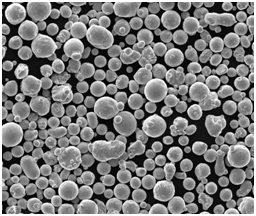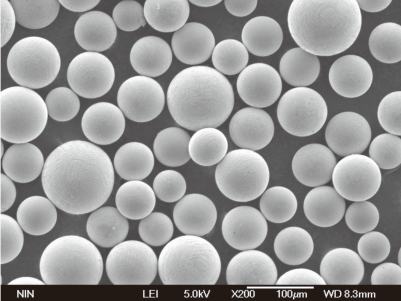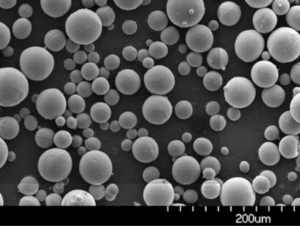Willkommen in der Welt der EB 3D-Drucksystem! Wenn Sie in diesen Bereich eintauchen, möchten Sie wahrscheinlich verstehen, wie der EB-3D-Druck funktioniert, wie er im Vergleich zu anderen Technologien abschneidet und welche spezifischen Materialien für Ihre Projekte am besten geeignet sind. Lassen Sie uns diese faszinierende Technologie genauer unter die Lupe nehmen, von den Grundlagen bis hin zu den kleinsten Details von Metallpulvern, und erfahren Sie, warum sie genau die Veränderung sein könnte, nach der Sie suchen.
Überblick über das EB 3D-Drucksystem
Der 3D-Druck mit Elektronenstrahl (EB), auch bekannt als Electron Beam Melting (EBM), ist ein fortschrittliches additives Fertigungsverfahren, bei dem ein hochenergetischer Elektronenstrahl verwendet wird, um Metallpulver Schicht für Schicht zu schmelzen und zu verschmelzen, wodurch komplexe Geometrien mit hoher Präzision und hervorragenden Materialeigenschaften entstehen. Im Gegensatz zu herkömmlichen Verfahren ermöglicht der EB-3D-Druck die Erstellung komplizierter Designs, deren Herstellung ansonsten unmöglich oder extrem kostspielig wäre.
Wichtige Details:
- Technologie: Additive Fertigung
- Prozess: Elektronenstrahlschmelzen
- Materialien: Hauptsächlich Metallpulver
- Anwendungen: Luft- und Raumfahrt, medizinische Implantate, Automobilindustrie, Werkzeugbau und mehr
- Vorteile: Hohe Präzision, komplexe Geometrien, hervorragende Materialeigenschaften
- Beschränkungen: Hohe Anschaffungskosten, begrenzte Materialauswahl, Vakuumumgebung erforderlich

Arten und Eigenschaften von Metallpulvern für den EB 3D-Druck
Die Wahl des richtigen Metallpulvers ist entscheidend für den Erfolg des EB-3D-Drucks. Im Folgenden finden Sie eine detaillierte Tabelle mit spezifischen Metallpulvermodellen, ihren Zusammensetzungen und wichtigsten Eigenschaften.
| Metallpulver-Modell | Zusammensetzung | Eigenschaften | Merkmale |
|---|---|---|---|
| ti-6al-4v | ti-6al-4v | Hohe Festigkeit, geringes Gewicht | Weit verbreitet in der Luft- und Raumfahrt und bei medizinischen Implantaten |
| Inconel 718 | Ni-Cr-Fe | Hochtemperaturbeständigkeit | Geeignet für Turbinenschaufeln und hoch beanspruchte Komponenten |
| CoCrMo | Co-Cr-Mo | Ausgezeichnete Verschleißfestigkeit | Ideal für zahnmedizinische und orthopädische Implantate |
| 316L-Edelstahl | Fe-Cr-Ni-Mo | Korrosionsbeständig | Einsatz in der Schifffahrt und in medizinischen Anwendungen |
| AlSi10Mg | Al-Si-Mg | Leichtes Gewicht, gute thermische Eigenschaften | Beliebt in der Automobil- und Luft- und Raumfahrtindustrie |
| Martensitaushärtender Stahl (1.2709) | Fe-Ni-Mo-Co | Hohe Festigkeit, gute Härte | Einsatz für Werkzeuge und Hochleistungsteile |
| Kupfer (Cu) | Reines Kupfer | Ausgezeichnete thermische und elektrische Leitfähigkeit | Anwendungen in Elektronik und Wärmetauschern |
| Niobium (Nb) | Reines Niobium | Hoher Schmelzpunkt, gute Duktilität | Verwendung in Supraleitern und Komponenten für die Luft- und Raumfahrt |
| Tantal (Ta) | Reines Tantal | Korrosionsbeständig, hoher Schmelzpunkt | Geeignet für chemische Verarbeitungsanlagen |
| Hastelloy X | Ni-Cr-Fe-Mo | Oxidationsbeständig, hohe Festigkeit | Ideal für Gasturbinenmotoren und Industrieöfen |
Anwendungen von EB 3D-Drucksystem
Die einzigartigen Fähigkeiten des EB-3D-Drucks machen ihn für eine Vielzahl von Hochleistungsanwendungen geeignet. Schauen wir uns einige der wichtigsten Anwendungen dieser Technologie an.
| Anmeldung | Industrie | Anwendungsfall |
|---|---|---|
| Komponenten für die Luft- und Raumfahrt | Luft- und Raumfahrt | Turbinenschaufeln, Strukturkomponenten |
| Medizinische Implantate | Medizinische | Hüft- und Knieimplantate, Zahnprothetik |
| Automobilteile | Automobilindustrie | Motorkomponenten, Leichtbaustrukturen |
| Werkzeuge und Gussformen | Herstellung | Spritzgussformen, Druckgusswerkzeuge |
| Wärmetauscher | Elektronik | Effiziente Kühllösungen |
| Supraleitende Materialien | Energie | Supraleitende Magnete und Komponenten |
| Ausrüstung für die chemische Verarbeitung | Industriell | Korrosionsbeständige Komponenten |
Spezifikationen, Größen, Güteklassen, Normen
Die Kenntnis der Spezifikationen, Größen, Qualitäten und Standards von Metallpulvern ist für die Gewährleistung der Kompatibilität und Leistung beim EB-3D-Druck unerlässlich.
| Metall-Pulver | Partikelgrößenbereich | Klasse | Normen |
|---|---|---|---|
| ti-6al-4v | 15-45 µm | Klasse 5 | ASTM F2924 |
| Inconel 718 | 15-53 µm | AMS 5662 | ASTM B637 |
| CoCrMo | 10-45 µm | ASTM F75 | ASTM F1537 |
| 316L-Edelstahl | 15-45 µm | 316L | ASTM A276 |
| AlSi10Mg | 20-63 µm | DIN 3.2381 | ISO 3522 |
| Martensitaushärtender Stahl (1.2709) | 15-45 µm | 1.2709 | AMS 6520 |
| Kupfer (Cu) | 10-45 µm | Cu-ETP | ASTM B170 |
| Niobium (Nb) | 20-60 µm | R04200 | ASTM B392 |
| Tantal (Ta) | 15-45 µm | R05200 | ASTM B365 |
| Hastelloy X | 15-53 µm | UNS N06002 | ASTM B572 |






Lieferanten und Preisangaben
Die Wahl des richtigen Lieferanten ist entscheidend für die Qualität und Konsistenz Ihrer EB 3D-Druckmaterialien. Hier finden Sie eine Liste seriöser Lieferanten und deren Preisangaben.
| Anbieter | Metall-Pulver | Preis (pro kg) | Website |
|---|---|---|---|
| Fortgeschrittene Puder | Ti-6Al-4V, Inconel 718 | $300 – $500 | advancedpowders.com |
| Sandvik Werkstoffe | 316L-Edelstahl, AlSi10Mg | $200 – $400 | home.sandvik |
| Tischlertechnik | CoCrMo, martensitaushärtender Stahl | $350 – $600 | cartech.de |
| GKN-Zusatzstoff | Kupfer, Niobium | $150 – $350 | gknadditive.com |
| LPW-Technologie | Tantal, Hastelloy X | $400 – $700 | lpwtechnology.com |
Vergleich der Vor- und Nachteile des EB 3D-Drucks
Es ist wichtig, die Vorteile und Grenzen des EB-3D-Drucks gegenüber anderen additiven Fertigungstechnologien abzuwägen. Hier ist ein detaillierter Vergleich.
| Aspekt | EB 3D-Druck | Im Vergleich zu anderen Methoden |
|---|---|---|
| Präzision | Hoch | Ähnlich wie SLM, besser als FDM |
| Materialeigenschaften | Überlegene | Besser als die meisten AM-Techniken |
| Geschwindigkeit | Mäßig | Schneller als SLS, langsamer als DMLS |
| Anfängliche Kosten | Hoch | Höher als SLM und FDM |
| Operative Kosten | Mäßig | Ähnlich wie beim SLM, niedriger als beim DMLS |
| Komplexität der Muster | Sehr hoch | Überlegener als FDM, vergleichbar mit SLM |
| Auswahl der Materialien | Begrenzt | Mehr Einschränkungen als SLM und DMLS |
| Nachbearbeitung | Minimal | Weniger als SLS, ähnlich wie DMLS |
| Vakuum-Anforderung | Ja | Einzigartig für EB, nicht erforderlich bei SLM/FDM |
Zusammensetzung des EB 3D-Drucksystems
Das EB-3D-Drucksystem besteht aus mehreren Schlüsselkomponenten, die alle eine wichtige Rolle im Prozess spielen.
- Elektronenstrahlkanone: Erzeugt den Elektronenstrahl zum Schmelzen des Metallpulvers.
- Vakuumkammer: Hält eine kontrollierte Umgebung frei von Verunreinigungen.
- Pulverspender: Sorgt für eine gleichmäßige Verteilung des Metallpulvers.
- Plattform aufbauen: Unterstützt das zu druckende Teil und bewegt sich, wenn Schichten hinzugefügt werden.
- Kontrollsystem: Verwaltet den gesamten Druckprozess, von der Strahlsteuerung bis zum Puderauftrag.
Merkmale des EB 3D-Drucksystems
Um das Potenzial des EB-3D-Drucks voll ausschöpfen zu können, ist es wichtig, die einzigartigen Eigenschaften dieses Verfahrens zu verstehen.
- Hohe Energiedichte: Der Elektronenstrahl kann hochschmelzende Metalle mit Präzision schmelzen.
- Vakuum Umgebung: Unverzichtbar zur Verhinderung von Oxidation und zur Gewährleistung der Materialintegrität.
- Layer-by-Layer Fusion: Ermöglicht die Erstellung von komplexen Geometrien mit feinen Details.
- Minimale thermische Belastung: Reduziert Verzug und Eigenspannungen in gedruckten Teilen.
Vorteile des EB 3D-Drucksystems
Warum sollten Sie EB 3D-Druck in Betracht ziehen? Hier sind einige zwingende Gründe:
- Überlegene Materialeigenschaften: Erzielt hervorragende mechanische Eigenschaften und Materialhomogenität.
- Komplexe Geometrien: Sie sind in der Lage, komplizierte Designs und interne Strukturen zu erstellen.
- Weniger Abfall: Verwendet nur die notwendige Menge an Material und minimiert so den Abfall.
- Weniger Nachbearbeitungen: Im Vergleich zu anderen Methoden sind in der Regel weniger Nacharbeiten erforderlich.
Beschränkungen der EB 3D-Drucksystem
Keine Technologie ist ohne ihre Schattenseiten. Hier sind einige Einschränkungen zu beachten:
- Hohe Anfangskosten: Die Kosten für Ausrüstung und Einrichtung können für kleine Unternehmen unerschwinglich sein.
- Materielle Beschränkungen: Geringere Materialauswahl im Vergleich zu anderen AM-Methoden.
- Vakuum-Anforderung: Die Notwendigkeit einer Vakuumumgebung kann die Einrichtung erschweren.
- Geschwindigkeit: Langsamer als einige andere 3D-Druckverfahren, insbesondere bei großen Teilen.

FAQs
| Frage | Antwort |
|---|---|
| Was ist EB 3D-Druck? | Ein hochenergetisches additives Fertigungsverfahren, bei dem Elektronenstrahlen verwendet werden, um Metallpulver Schicht für Schicht zu schmelzen. |
| Welche Branchen nutzen den EB 3D-Druck? | Vor allem in der Luft- und Raumfahrt, der Medizintechnik, der Automobilindustrie und der verarbeitenden Industrie. |
| Welche Materialien können verwendet werden? | In erster Linie Metallpulver wie Ti-6Al-4V, Inconel 718 und 316L-Edelstahl. |
| Wie sieht es im Vergleich zu SLM aus? | Bietet überlegene Materialeigenschaften und Präzision, hat aber weniger Auswahl an Materialien. |
| Was sind die wichtigsten Vorteile? | Hohe Präzision, hervorragende Materialeigenschaften und die Möglichkeit, komplexe Geometrien zu erstellen. |
| Was sind die wichtigsten Einschränkungen? | Hohe Anschaffungskosten, begrenzte Materialauswahl und Erfordernis einer Vakuumumgebung. |
| Ist eine Nachbearbeitung erforderlich? | In der Regel minimal im Vergleich zu anderen Verfahren wie SLS und DMLS. |
| Was sind gängige Anwendungen? | Turbinenschaufeln, medizinische Implantate, Triebwerkskomponenten und Werkzeugbau. |
| Wie wird der Elektronenstrahl erzeugt? | Mit einer Elektronenstrahlkanone in einer Vakuumkammer. |
| Wie hoch sind die typischen Kosten von Metallpulvern? | Die Preise reichen von $150 bis $700 pro kg, je nach Material. |
Schlussfolgerung
Das EB-3D-Drucksystem zeichnet sich in der Landschaft der additiven Fertigung durch seine Fähigkeit aus, hochwertige, komplexe Metallteile mit Präzision und hervorragenden Materialeigenschaften herzustellen. Es ist zwar mit höheren Kosten und einigen Materialbeschränkungen verbunden, aber die Vorteile, die es in Form von weniger Abfall, minimaler Nachbearbeitung und überlegenen mechanischen Eigenschaften bietet, machen es zu einer attraktiven Wahl für Branchen, in denen Leistung und Qualität an erster Stelle stehen. Ganz gleich, ob Sie in der Luft- und Raumfahrt, in der Medizintechnik oder in einem anderen Hightech-Bereich tätig sind, ein Verständnis der Feinheiten des EB-3D-Drucks kann Ihnen helfen, fundierte Entscheidungen über Ihre Fertigungsprozesse zu treffen.

